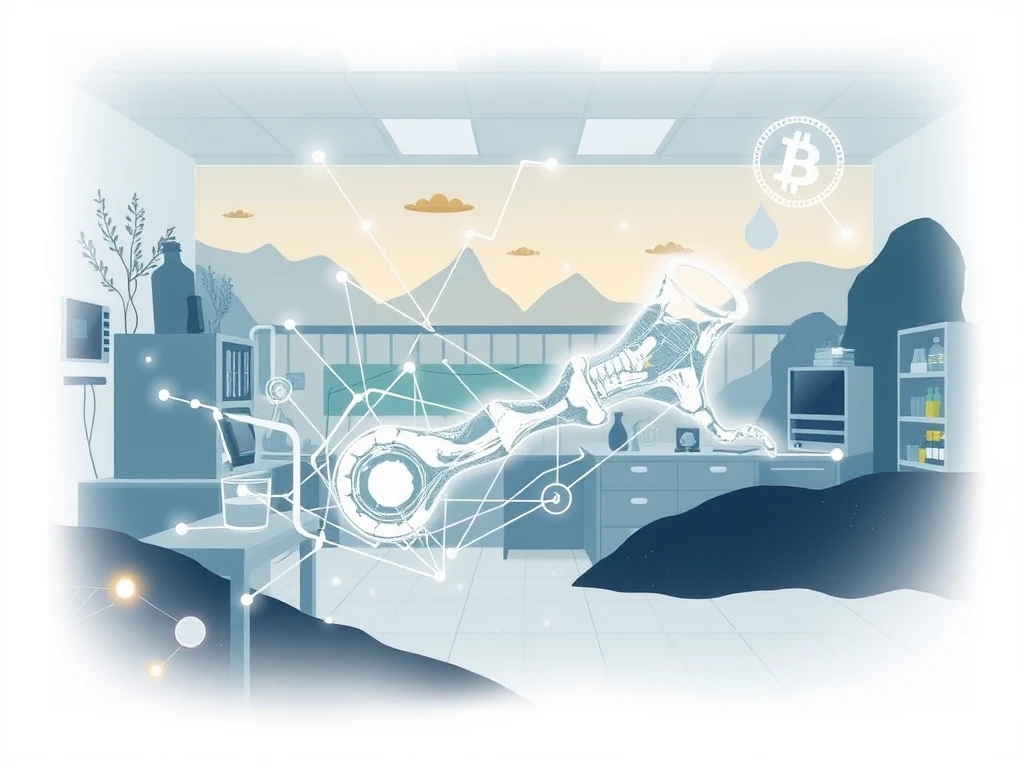Amazing DeSci Breakthrough: Spinal Cord Repair Claimed by HydraDAO

In the world of crypto and blockchain, innovation isn’t just limited to finance. A compelling example comes from the realm of Decentralized Science (DeSci), where crypto funding is backing potentially groundbreaking research. A DeSci project known as HydraDAO recently made a significant claim that’s turning heads: researchers reportedly achieved rapid spinal cord repair in paralyzed rats.
HydraDAO Claims Spinal Cord Repair Success
Decentralized autonomous organization (DAO) HydraDAO announced a remarkable outcome from one of its funded research projects. According to a May 5 social media post, researchers associated with HydraDAO were able to restore mobility in rats that had undergone complete spinal cord transection. The most striking part of the claim is the speed of recovery – mobility was reportedly regained within just five days post-surgery.
The specific project behind this claim is the Dowell spinal fusogens project, spearheaded by Michael Lebenstein-Gumovski. This initiative successfully raised 380,700 USDC in crypto funding from donors via the HydraDAO platform. The project’s proposal, after undergoing peer review within the HydraDAO community, was deemed worthy of support.
This development highlights how DAOs are beginning to channel resources into areas beyond typical crypto applications, pushing the boundaries of what crypto funding can achieve in fields like science and medicine.
How Did They Achieve This Spinal Cord Repair?
The technique involves the use of fusogens, chemicals known for their ability to fuse cell membranes. Polyethylene glycol (PEG) is a well-known fusogen used in nerve repair research. The Dowell team developed a novel compound called neuro-PEG by combining PEG with chitosan, a biopolymer derived from crustacean shells. This neuro-PEG compound has a unique property: it is photopolymerizable, meaning it can solidify rapidly when exposed to light. This solidification is intended to create a stable scaffold to help reconnect severed nerve fibers more effectively than liquid solutions.
In addition to the neuro-PEG compound, the researchers also employed neuroprotection techniques during the procedure. These techniques, such as localized hypothermia and cellular death inhibitors, are used to minimize further damage to nerve tissue surrounding the injury site.
Previous research involving this compound showed promising results in animals. A 2023 paper co-authored by Gumovski reported that pigs treated with the compound after complete spinal cord transection recovered mobility within two months. This earlier study suggested the potential for human application and even spinal cord transplantation trials.
The team has also pursued intellectual property protection, having filed a patent in Russia in 2022 describing a method for restoring spinal cord functions using the PEG-chitosan conjugate.
Potential Applications and Business Model
The HydraDAO project proposal outlines potential revenue streams should the technology prove successful and gain wider adoption. These include:
- Specialized surgical kits: Priced between $3,500 and $20,000, depending on the market and region.
- Comprehensive training and certification: Offering programs for neurosurgeons and emergency medical services personnel to implement the technique.
This model suggests a path for the research to transition from the lab to practical medical application, creating potential returns for the Decentralized Science community that funded it.
Cautionary Notes and Future Steps for DeSci Research
While the claims of rapid spinal cord repair are exciting, it’s important to approach them with cautious optimism. The lead researcher, Michael Lebenstein-Gumovski, has past associations with controversial projects, specifically Sergio Canavero’s head-transplant research. While the Dowell project utilizes established concepts like fusogens, which have shown some positive results in other studies (though typically less dramatic and rapid), the connection to prior controversial claims necessitates careful scrutiny.
Independent verification and reproduction of these results by multiple third-party research teams are crucial next steps to validate the findings and assess the technique’s clinical viability for real-world spinal injuries. HydraDAO has indicated plans for further experiments, including electrophysiology and tracing dyes, to provide more data on brain-spine connectivity, which could significantly enhance the credibility of the research results.
This case highlights both the potential and the challenges inherent in DeSci. While crypto funding can accelerate research outside traditional channels, the scientific rigor and validation processes remain paramount.
Summary: The Hope and Reality of Crypto-Funded Spinal Cord Repair
The claim from HydraDAO regarding rapid spinal cord repair in rats represents a potentially significant development in the field of regenerative medicine, powered by crypto funding through a Decentralized Science model. The use of a novel PEG-chitosan compound and neuroprotection techniques appears promising based on the initial reports and previous animal studies. However, given the historical context and the extraordinary nature of the claim (five-day recovery from complete transection), independent validation is absolutely essential before this can be considered a clinically viable solution for human spinal cord injuries. The future of this DeSci project hinges on further rigorous testing and successful reproduction of these remarkable results.








